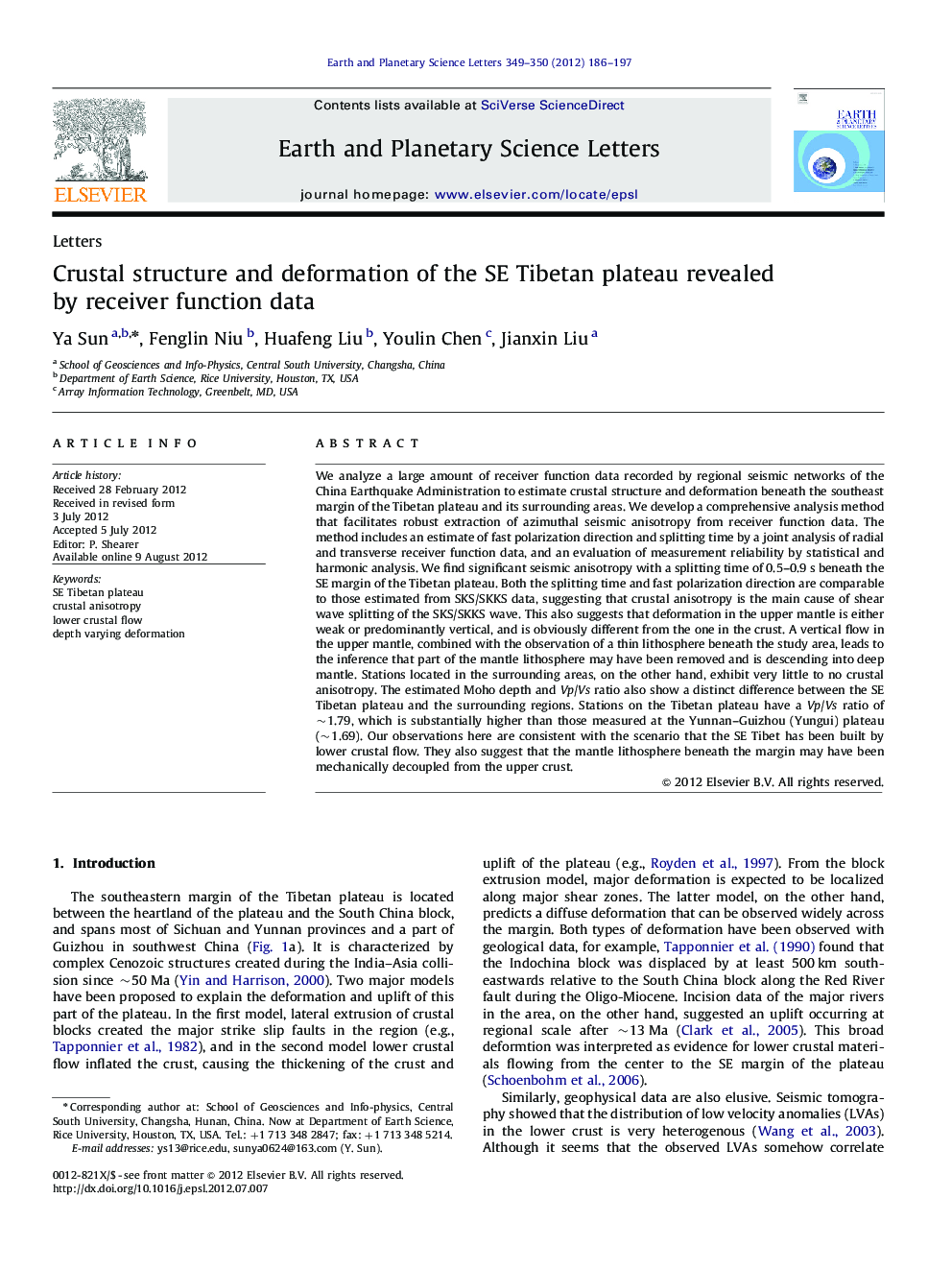| کد مقاله | کد نشریه | سال انتشار | مقاله انگلیسی | نسخه تمام متن |
|---|---|---|---|---|
| 4677407 | 1634798 | 2012 | 12 صفحه PDF | دانلود رایگان |

We analyze a large amount of receiver function data recorded by regional seismic networks of the China Earthquake Administration to estimate crustal structure and deformation beneath the southeast margin of the Tibetan plateau and its surrounding areas. We develop a comprehensive analysis method that facilitates robust extraction of azimuthal seismic anisotropy from receiver function data. The method includes an estimate of fast polarization direction and splitting time by a joint analysis of radial and transverse receiver function data, and an evaluation of measurement reliability by statistical and harmonic analysis. We find significant seismic anisotropy with a splitting time of 0.5–0.9 s beneath the SE margin of the Tibetan plateau. Both the splitting time and fast polarization direction are comparable to those estimated from SKS/SKKS data, suggesting that crustal anisotropy is the main cause of shear wave splitting of the SKS/SKKS wave. This also suggests that deformation in the upper mantle is either weak or predominantly vertical, and is obviously different from the one in the crust. A vertical flow in the upper mantle, combined with the observation of a thin lithosphere beneath the study area, leads to the inference that part of the mantle lithosphere may have been removed and is descending into deep mantle. Stations located in the surrounding areas, on the other hand, exhibit very little to no crustal anisotropy. The estimated Moho depth and Vp/Vs ratio also show a distinct difference between the SE Tibetan plateau and the surrounding regions. Stations on the Tibetan plateau have a Vp/Vs ratio of ∼1.79, which is substantially higher than those measured at the Yunnan–Guizhou (Yungui) plateau (∼1.69). Our observations here are consistent with the scenario that the SE Tibet has been built by lower crustal flow. They also suggest that the mantle lithosphere beneath the margin may have been mechanically decoupled from the upper crust.
► Crust beneath SE Tibet has high Vp/Vs ratio and significant azimuthal anisotropy.
► Fast direction and splitting time obtained from Moho Ps and SKS are comparable.
► Deformation in the upper mantle is either weak or predominantly vertical.
► Crustal and mantle deformation beneath the margin is decoupled.
► These observations are consistent with the lower crust flow model.
Journal: Earth and Planetary Science Letters - Volumes 349–350, 1 October 2012, Pages 186–197